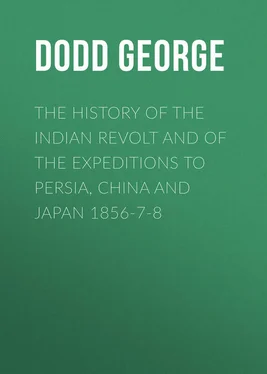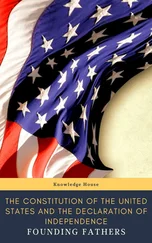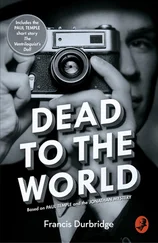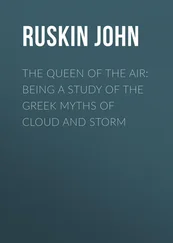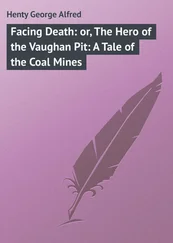George Dodd - The History of the Indian Revolt and of the Expeditions to Persia, China and Japan 1856-7-8
Здесь есть возможность читать онлайн «George Dodd - The History of the Indian Revolt and of the Expeditions to Persia, China and Japan 1856-7-8» — ознакомительный отрывок электронной книги совершенно бесплатно, а после прочтения отрывка купить полную версию. В некоторых случаях можно слушать аудио, скачать через торрент в формате fb2 и присутствует краткое содержание. Жанр: foreign_antique, foreign_prose, на английском языке. Описание произведения, (предисловие) а так же отзывы посетителей доступны на портале библиотеки ЛибКат.
- Название:The History of the Indian Revolt and of the Expeditions to Persia, China and Japan 1856-7-8
- Автор:
- Жанр:
- Год:неизвестен
- ISBN:нет данных
- Рейтинг книги:3 / 5. Голосов: 1
-
Избранное:Добавить в избранное
- Отзывы:
-
Ваша оценка:
- 60
- 1
- 2
- 3
- 4
- 5
The History of the Indian Revolt and of the Expeditions to Persia, China and Japan 1856-7-8: краткое содержание, описание и аннотация
Предлагаем к чтению аннотацию, описание, краткое содержание или предисловие (зависит от того, что написал сам автор книги «The History of the Indian Revolt and of the Expeditions to Persia, China and Japan 1856-7-8»). Если вы не нашли необходимую информацию о книге — напишите в комментариях, мы постараемся отыскать её.
The History of the Indian Revolt and of the Expeditions to Persia, China and Japan 1856-7-8 — читать онлайн ознакомительный отрывок
Ниже представлен текст книги, разбитый по страницам. Система сохранения места последней прочитанной страницы, позволяет с удобством читать онлайн бесплатно книгу «The History of the Indian Revolt and of the Expeditions to Persia, China and Japan 1856-7-8», без необходимости каждый раз заново искать на чём Вы остановились. Поставьте закладку, и сможете в любой момент перейти на страницу, на которой закончили чтение.
Интервал:
Закладка:
To return now to the affair at Dumdum. When the complaints and suspicions of the sepoys were made known, inquiries were sent to England for exact particulars relating to the obnoxious missiles. It was ascertained that the new cartridges were made at the Royal Laboratory at Woolwich; and that Captain Boxer, the superintendent of that department, was accustomed to use for lubrication a composition formed of five parts tallow, five parts stearine, and one part wax – containing, therefore, ox or cow’s fat, but none from pigs. He had no prejudices in the matter to contend against in England, and used therefore just such a composition as appeared to him most suitable for the purpose. The cartridges were not sent out to India ready greased for use; as, in a hot country, the grease would soon be absorbed by the paper: there was, therefore, a part of the process left to be accomplished when the cartridges reached their destination.
It appears to have been in the latter part of January that the first open manifestation was made at Dumdum of a disinclination to use the cartridges; and immediately a correspondence among the authorities commenced concerning it. When the complaint had been made, the men were seemingly appeased on being assured that the matter would be duly represented; and as a means of conciliation, cartridges without grease were issued, the men being allowed to apply any lubricating substance they chose. It was further determined that no more ready-made cartridges should be obtained from England, but that bullets and paper should be sent separately, to be put together in India; that experiments should be made at Woolwich, to produce some lubricating substance free from any of the obnoxious ingredients; and that other experiments should meanwhile be made by the 60th Rifles – at that time stationed at Meerut – having the same object in view.
During the inquiry into the manifestation and alleged motives of this insubordination, one fact was elicited, which, if correct, seems to point to a date when the conspirators – whoever they may have been – began to act upon the dupes. On the 22d of January, a low-caste Hindoo asked a sepoy of the 2d Bengal Grenadiers to give him a little water from his lota or bottle; the other, being a Brahmin, refused, on the ground that the applicant would defile the vessel by his touch – a magnificence of class-superiority to which only the Hindoo theory could afford place. This refusal was met by a retort, that the Brahmin need not pride himself on his caste, for he would soon lose it, as he would ere long be required to bite off the ends of cartridges covered with the fat of pigs and cows. The Brahmin, alarmed, spread the report; and the native troops, as is alleged, were afraid that when they went home their friends would refuse to eat with them. When this became known to the English officers, the native troops were drawn up on parade, and encouraged to state the grounds of their dissatisfaction. All the native sergeants and corporals, and two-thirds of all the privates, at once stepped forward, expressed their abhorrence of having to touch anything containing the fat of cows or pigs, and suggested the employment of wax or oil for lubricating the cartridges. It was then that the conciliatory measures, noticed above, were adopted.
Still were there troubles and suspicious circumstances; but the scene is now transferred from Dumdum to Barrackpore. This town, sixteen miles from Calcutta, is worthy of note chiefly for its connection with the supreme government of India. The governor-general has a sort of suburban residence there, handsome, commodious, and situated in the midst of a very beautiful park. There are numerous bungalows or villas inhabited by European families, drawn to the spot by the salubrity of the air, by the beauty of the Hoogly branch of the Ganges, at this place three-quarters of a mile in width, and by the garden and promenade attached to the governor-general’s villa. In military matters, before the Revolt, there was a ‘presidency division of the army,’ of which some of the troops were in Calcutta, some at Barrackpore, and a small force of artillery at Dumdum, nearly midway between the two places; the whole commanded by a general officer at Barrackpore, under whom was a brigadier to command that station only. The station is convenient for military operations in the eastern part of Bengal, and for any sudden emergencies at Calcutta. Six regiments of native infantry were usually cantoned at Barrackpore, with a full complement of officers: the men hutted in commodious lines, and the officers accommodated in bungalows or lodges.
It was at this place that the discontent next shewed itself, much to the vexation of the government, who had hoped that the Dumdum affair had been satisfactorily settled, and who had explained to the native regiments at Barrackpore what had been done to remove the alleged cause of complaint. The sepoys at this place, however, made an objection to bite off the ends of the cartridges – a necessary preliminary to the loading of a rifle – on account of the animal fat contained, or supposed to be contained, in the grease with which the paper was lubricated: such fat not being permitted to touch the lips or tongues of the men, under peril of defilement. Some of the authorities strongly suspected that this renewed discontent was the work of secret agitators rather than a spontaneous expression of the men’s real feeling. There was at the time a religious Hindoo society or party at Calcutta, called the Dhurma Sobha, suspected of having spread rumours that the British government intended to compel the Hindoos to become Christians. Contemporaneously, too, with this movement, three incendiary fires took place at Barrackpore within four days; and a native sergeant’s bungalow was burnt down at Raneegunge, another military station in Lower Bengal. It was natural, therefore, that General Hearsey, the responsible officer at Barrackpore, should wish to ascertain what connection, if any, existed between these incendiarisms, intrigues, complainings, and greased cartridges. This was the more imperative, on account of the relative paucity of English troops in that part of India. There were four native regiments quartered at that time at Barrackpore – namely, the 2d Grenadiers, the 34th and 70th Native Infantry, and the 43d Native Light Infantry; whereas, in the four hundred miles between Calcutta and Dinapoor there was only one European regiment, the Queen’s 53d foot, of which one half was at Calcutta and the other half at Dumdum. The general held a special court of inquiry at Barrackpore on the 6th of February, and selected a portion of the 2d native Grenadier regiment to come forward and explain the cause of their continued objection to the paper of which the new rifle-cartridges were composed. One of the sepoys, Byjonath Pandy, stated that he felt a suspicion that the paper might affect his caste. On being asked his reason for this suspicion, he answered that the paper was a new kind which he had not seen before; and there was a ‘bazaar report’ that the paper contained animal fat. On being requested to examine the paper carefully in the light, and to explain to the court what he saw objectionable in it, he replied that his suspicion proceeded from the paper being stiff and cloth-like, and from its tearing differently from the paper formerly in use. Another sepoy, Chaud Khan, was then examined. He objected to the paper because it was tough, and burned as if it contained grease. He stated that much dismay had been occasioned in the regiment by the fact that ‘on the 4th of February a piece of the cartridge-paper was dipped in water, and then burned; when burning, it made a fizzing noise, and smelt as if there were grease in it.’ Thereupon a piece of the paper was burned in open court; Chaud Khan confessed that he could not smell or see grease in it; but he repeated his objection to the use of the paper, on the plea that ‘everybody is dissatisfied with it on account of its being glazed, shining like waxed cloth.’ Another witness, Khadu Buksh, filling the rank of subadar or native captain, on being examined, frankly stated that he had no objection to the cartridge itself, but that there was a general report in the cantonment that the paper was made up with fat. A jemadar or lieutenant, named Golal Khan, said very positively: ‘There is grease in it, I feel assured; as it differs from the paper which has heretofore been always used for cartridges.’ As shewing the well-known power of what in England would be called ‘public opinion,’ the answer of one of the sepoys is worthy of notice; he candidly confessed that he himself had no objection to use the cartridges, but he could not do so, as his companions would object to it. While these occurrences were under scrutiny, a jemadar of the 34th regiment came forward to narrate what he knew on the matter, as affording proof of conspiracy. On the 5th, when the fear of detection had begun to work among them, two or three of the sepoys came to him, and asked him to accompany them to the parade-ground. He did so, and there found a great crowd assembled, composed of men of the different regiments at the station; they had their heads tied up in handkerchiefs or cloths, so that only a small part of the face was exposed. They told him they were determined to die for their religion; and that if they could concert a plan that evening, they would on the next night plunder the station and kill all the Europeans, and then depart whither they pleased. The number he stated to be about three hundred. It was not at the time known to the authorities, but was rendered probable by circumstances afterwards brought to light, that letters and emissaries were being despatched, at the beginning of February, from the native troops at Barrackpore to those at other stations, inviting them to rise in revolt against the British.
Читать дальшеИнтервал:
Закладка:
Похожие книги на «The History of the Indian Revolt and of the Expeditions to Persia, China and Japan 1856-7-8»
Представляем Вашему вниманию похожие книги на «The History of the Indian Revolt and of the Expeditions to Persia, China and Japan 1856-7-8» списком для выбора. Мы отобрали схожую по названию и смыслу литературу в надежде предоставить читателям больше вариантов отыскать новые, интересные, ещё непрочитанные произведения.
Обсуждение, отзывы о книге «The History of the Indian Revolt and of the Expeditions to Persia, China and Japan 1856-7-8» и просто собственные мнения читателей. Оставьте ваши комментарии, напишите, что Вы думаете о произведении, его смысле или главных героях. Укажите что конкретно понравилось, а что нет, и почему Вы так считаете.
